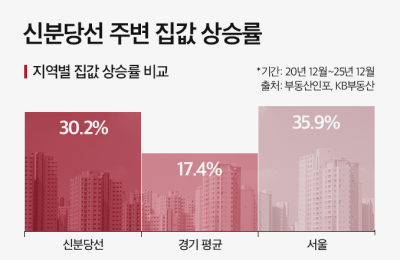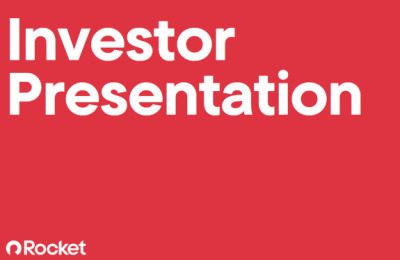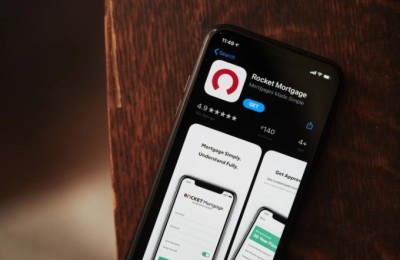Remarks by Chairman Ben S. BernankeAt the Fifteenth Congressional District of Texas’ Fifth Regional Issues Conference, Washington, D.C., Washington, D.C.,June 13, 2006 Increasing Economic Opportunity: Challenges and Strategies I am pleased to be here to discuss some strategies for helping families, particularly lower-income families, improve their economic and financial well-being. Families today face a financial marketplace that is increasingly complex, with numerous products and service providers from which to choose. Today I will touch on several approaches for helping people of modest means take advantage of these financial opportunities while managing the risks and avoiding possible pitfalls. Today’s Financial Marketplace Technological advances have dramatically transformed the provision of financial products and services in recent years. To cite just one example, the expanded use of computerized credit-scoring models, by reducing the costs of making loans and by increasing the range of assets that lenders can sell on the secondary market, has made possible the extension of credit to a larger group of borrowers. Indeed, we have seen an increasingly wide array of products being offered to consumers across a range of incomes, leading to what has been called the democratization of credit. Likewise, technological innovation has enhanced financial services, such as banking services, and increased the variety of financial products available to savers.The range of providers in consumer financial markets has also increased, with the number of nonbank entities offering credit and other financial services having risen particularly quickly. For example, a recent study of alternative providers of financial services found the number of nonbank check-cashing establishments doubled in the United States between 1996 and 2001.1 Payday lending outlets, a source of credit that was almost non-existent a decade ago, now number more than 10,000. And data from the Survey of Consumers Finances, a triennial survey sponsored by the Federal Reserve Board, indicate that the share of households with a loan from a finance company increased from 13 percent in 1992 to 25 percent in 2004. Financial Challenges of Lower-Income FamiliesDespite the increased complexity of financial products and the wider availability of credit in many forms, U.S. households overall have been managing their personal finances well. On average, debt burdens appear to be at manageable levels, and delinquency rates on consumer loans and home mortgages have been low. Measured relative to disposable income, household net worth is at a fairly high level, although still below the peak reached earlier this decade. Families with low to moderate incomes, however, face special financial challenges. These families generally have less of a cushion to absorb unanticipated expenses or to deal with adverse circumstances, such as the loss of employment or a serious health problem. Results from the Survey of Consumer Finances show that the median net worth for households in the lowest income quintile--those whose income placed them in the bottom fifth of the population--was only $7,500 in 2004, well below the median for all survey respondents of $93,000.2 The Survey data also indicate that households in the lowest quintile were significantly less likely than the average respondent to maintain a checking or savings account; almost 25 percent of those families were "unbanked," compared to less than 10 percent of families in the other income quintiles. The reasons given for not having an account varied: Some respondents said they would not write enough checks to make having an account worthwhile, but others were dissuaded by minimum balance requirements or said that they did not have enough money to justify opening an account. In some cases, a lack of knowledge about the services that banks offer or even a distrust of banks is likely a factor. The Survey also found that lower-income households are less able than others to manage their debts. A greater fraction of these households had debt-to-income ratios of 40 percent or more or had a payment past due at least sixty days. The data also reveal that only 40 percent of families in the lowest quintile own a home, compared with a homeownership rate of 69 percent among all families surveyed. Finally, the data on retirement account ownership show an even larger gap, with only 10 percent of lowest-quintile families holding a retirement account, whereas 50 percent of all families responding to the survey reported participation in some type of retirement savings plan. How can these disparities be addressed? Some general approaches to helping families of modest means build assets and improve their economic well-being include community economic development, financial education, and programs that encourage saving and investment. In the remainder of my remarks, I will discuss each of these approaches briefly and offer some insights into their effectiveness based on research and experience.Community Economic Development In my time with the Federal Reserve, I have had a number of opportunities to meet with community economic development leaders--representatives of groups working to assist lower-income families become homeowners, start small businesses, better manage their finances, and save for the future. In fact, my first trip as a Federal Reserve Board member was to Brownsville, Texas, where I saw how a grassroots nonprofit organization is helping to build communities and to provide residents with the chance to build wealth through homeownership. The Community Development Corporation (CDC) of Brownsville works with multiple funding partners--governments at all levels, financial institutions, foundations, and corporations--to construct housing and to design innovative loan products that enable low-income families to qualify for mortgage credit. For example, because of the mix of funding sources, mortgage loans can be offered with features such as down‑payment assistance or a below-market interest rate. The CDC of Brownsville also offers a program that allows prospective homeowners to acquire "sweat equity" in a property by working on construction teams to help build their own new home and those of other participating families. As in the case of many community development organizations, the Brownsville CDC has also made financial education a critical element of its efforts to help lower-income residents improve their financial status. For example, participation in financial counseling or in an education program is typically required for a borrower to obtain a loan through the CDC or through one of its lending partners. However, the broader aim of these programs is to improve borrowers’ prospects for longer-term success in maintaining their credit and handling their overall finances. Since 1994, through this combination of leveraged financing arrangements and borrower education, the CDC of Brownsville has helped make homeownership possible for more than 2,500 low-income families. I cite the Brownsville example because of the opportunity that I had to learn about their work (and I recently had a similar opportunity to see some impressive community development efforts in the Anacostia neighborhood of the District of Columbia). But this localized approach to community development and wealth-building is playing out in neighborhoods throughout the country, in most cases through strategies tailored to the distinct needs of the particular community.Financial Education and Financial LiteracyFinancial education has not only been integral to community development but has also begun to play a larger role in the broader consumer market. Clearly, to choose wisely from the wide variety of financial products and providers available, consumers must have at least basic financial knowledge. People who understand the financial aspects of purchasing a home or starting a business, or who appreciate the importance of saving for children’s education or retirement, will almost certainly be economically better off than those without that vital information. Financial literacy can be acquired through many channels: in school, on the job, through community programs and counseling, or through self-education and experience.Studies generally find that people receiving financial education or counseling have better financial outcomes. For example, research that analyzed data on nearly 40,000 mortgage loans targeted to lower-income borrowers found that families that received individual financial counseling were less likely later to become delinquent on their mortgage payments.3 Similarly, another study found that borrowers who sought and received assistance from a credit counseling agency improved their credit management, in particular, by reducing the number of credit accounts on which they carried positive balances, cutting overall debt, and reducing delinquency rates.4 More broadly, the research shows that financial knowledge is correlated with good financial outcomes; for example, individuals familiar with basic financial concepts and products have been found to be more likely to balance their checkbook every month, budget for savings, and hold investment accounts.5 Studies that establish an association between financial knowledge and good financial outcomes are encouraging, but they do not necessarily prove that financial training and counseling are the causes of the better outcomes. It could be, for example, that counseling is associated with better financial outcomes because the consumers who choose to seek counseling are the ones who are already better informed or more motivated to make good financial decisions. In medicine and other fields, researchers gain a better understanding of what causes what by doing controlled studies, in which some subjects are randomly assigned a particular treatment while others do not receive it. To translate this idea to the analysis of the effects of financial counseling, the Federal Reserve Board’s Division of Consumer and Community Affairs is collaborating with the Department of Defense to conduct a three-year study of the effects of financial education. This study will evaluate the impact of various educational programs on the financial decisions of soldiers and their families. It includes a treatment group of those receiving financial education, with the programs each family receives and when they receive it being determined randomly, and a control group of similar soldiers and their families who have not received this formal financial education. Because assignments of individuals to programs will be random, any observed changes in behavior can be more reliably attributed to the type and amount of counseling received. Among other things, the results of this study should help us better understand whether financial education leads to changes in behavior for participants in general or only for those at critical teaching moments, such as the period before making a major financial decision such as choosing a mortgage.I would like to say just a few words about the Federal Reserve’s broader role in promoting consumers’ understanding of financial products and services. Beyond conducting surveys of consumers and doing research, we work in a number of ways to support consumers in their financial decisionmaking. For example, through our consumer protection rule-writing authority, the Federal Reserve sets requirements that specify the information that must be disclosed to consumers about the terms and fees associated with credit and deposit accounts. These disclosures provide consumers with the essential information they need to assess the costs and benefits of financial services and compare products among different providers. We are currently reviewing many of our disclosures and plan to use focus groups and other methods to try to make these disclosures as clear and as user-friendly as possible. The Federal Reserve System also works to promote financial education and financial literacy through various outreach and educational activities. We provide a great deal of substantive financial information, including interactive tools for economic education, on our education website www.federalreserveeducation.org. The website links to a wide variety of financial education resources at the local, regional, and national levels.Additionally, the Federal Reserved Board collaborates with educational and community development organizations to support their efforts. Our national partners include the Jump$tart Coalition for Personal Financial Literacy, the Conference of Mayors’ DollarWi$e Campaign, Operation HOPE, the American Savings Education Council, and America Saves, among others. At the regional level, the twelve Federal Reserve Banks work with organizations to support financial education and financial literacy. For example, the Federal Reserve Bank of Cleveland has worked with community financial educators to form regional networks that combine resources and share best practices. The Federal Reserve Bank of Chicago sponsors "MoneySmart Week," partnering with banks, businesses, government agencies, schools, community organizations, and libraries to host activities designed to help consumers learn how to manage money. The Federal Reserve Banks of San Francisco and Minneapolis have worked with leaders in the Native American community to develop financial education materials. My recent testimony to Congress on financial literacy provided information on many other projects and programs. 6 The Federal Reserve will continue to make financial education a priority.Strategies to Encourage SavingEven if people know that they would be better off if they saved more or budgeted more wisely, we all know from personal experience that translating good intentions into action can be difficult. (Think about how hard it is to keep New Year’s resolutions.) The field of behavioral economics, which studies economic and financial decisions from a psychological perspective, has cast new light on consumer behavior and led to recommendations about how to improve people’s financial management. For example, studies of individual choices in 401(k) savings plans strongly suggest that workers do not pay adequate attention to their saving and investment decisions. Notably, despite the tax advantages of 401(k) contributions and, in some cases, a generous employer match, one-quarter of workers eligible for 401(k) plans do not participate. Studies have found, however, that if firms change the presentation of the plan from an "opt-in" choice to an "opt-out" choice, in which workers are automatically enrolled unless they actively choose to remain out of the plan, participation rates increase substantially.7 The impact of changing from "opt-in" to "opt-out" is particularly evident for younger and lower-income workers, who may have less financial expertise.In addition, participants in savings plans evidently do not understand the various investment options that are offered. A survey by the investment management firm, The Vanguard Group, found that many plan participants cannot assess the risk inherent in different types of financial assets; for example, many did not appreciate that a diversified equity mutual fund is generally less risky than keeping most of one’s wealth in the form of the employer’s stock.8 Indeed, employees appear to invest heavily in their company’s stock despite the fact that their income is already tied to the fortunes of their employer. More than one-quarter of 401(k) balances are held in company stock, and this high share arises not only from an employer match but from voluntary purchases as well.9These insights into consumer behavior have prompted some changes in the design of retirement plans and in education programs focused on saving for retirement. More employers now feature automatic enrollment in their 401(k) plans in an effort to boost participation. Also, some have set the default investment option to a diversified portfolio that is rebalanced automatically as the worker ages or have set contribution rates to rise automatically over time in line with salary increases.However, although these changes in program design may boost saving and improve investment choices, they are not a substitute for continued financial education. Employers, including the Federal Reserve Board, offer financial education at the workplace to help their workers gain a better understanding of retirement savings options. Helping people appreciate the importance of saving and giving them the tools they need to translate that knowledge into action remain major challenges.ConclusionLet me close by observing that many factors influence consumer financial behavior. Financial education is clearly central to helping consumers make better decisions for themselves and their families, but policymakers, regulators, nonprofit organizations, and financial service providers must all help ensure that consumers have the tools and the information they need to make better decisions. Success can only come through collaborative efforts. I see much interest today in increased collaboration toward these objectives, both in Washington and around the country.Thank you for the opportunity to speak with you today. I encourage you to continue working together to help provide increased economic opportunity in your communities, and I wish you the best of luck in your efforts. --------------------------------------------------------------------------------Footnotes1. Kenneth Temkin and Noah Sawyer (2004), "Analysis of Alternative Financial Service Providers (781 KB PDF)," report prepared for the Fannie Mae Foundation by the Urban Institute Metropolitan Housing and Communities Policy Center. 2. Brian K. Bucks, Arthur B. Kennickell, and Kevin B. Moore (2006), "Recent Changes in U.S. Family Finances: Evidence from the 2001 and 2004 Survey of Consumer Finances (448 KB PDF)," Federal Reserve Bulletin. 3. Abdighani Hirad and Peter M. Zorn (2001), "A Little Knowledge Is a Good Thing: Empirical Evidence of the Effectiveness of Pre-Purchase Homeownership Counseling (466 KB PDF)," paper presented at "Seeds of Growth - Sustainable CommunityDevelopment: What Works, What Doesn’t and Why?" 4. Gregory Elliehausen, E. Christopher Lundquist, and Michael E. Staten (2003), "The Impact of Credit Counseling on Subsequent Borrower Credit Usage and Payment Behavior (305 KB PDF" (January), paper presented at "Seeds of Growth - Sustainable Community Development: What Works, What Doesn’t and Why?" 5. Jeanne M. Hogarth and Marianne A. Hilgert (2003), "Patterns of Financial Behaviors: Implications for Community Educators and Policymakers (1.7 MB PDF)," paper presented at "Seeds of Growth - Sustainable Community Development: What Works, What Doesn’t and Why?" 6. Chairman Ben S. Bernanke, Financial Literacy, Testimony Before the Committee on Banking, Housing, and Urban Affairs, U.S. Senate, May 23, 2006. 7. Brigitte Madrian and Dennis Shea (2001), "The Power of Suggestion: Inertia in 401(k) Participation and Savings Behavior," Quarterly Journal of Economics, vol. 116 (November), pp. 1149-87. 8. The Vanguard Group (2002), "Expecting Lower Market Returns in the Near Term," Vanguard Participant Monitor. 9. Jeffrey R. Brown, Nellie Liang, and Scott Weisbenner (2006), "401(k) Matching Contributions in Company Stock: Costs and Benefits for Firms and Workers," Journal of Public Economics, vol. 90 (August), pp. 1315-46.
 사진
사진
 사진
사진






















